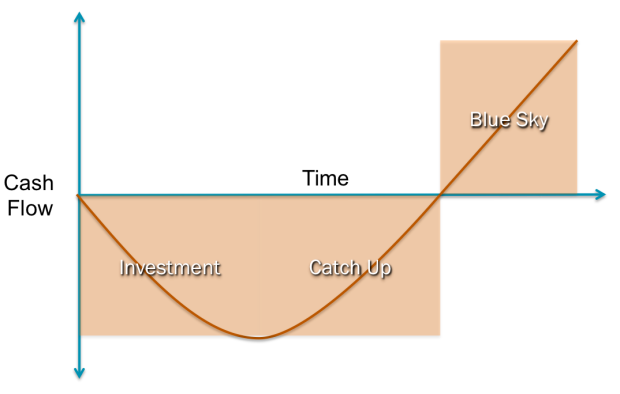Maybe it’s because you know that inbound marketing leads cost 62% than outbound leads. Maybe it’s because you heard that companies who blog get 55% more website visitors. Or maybe it’s because you decided you want your company to be more remarkable.
More human.
Whatever the reason, you’ve decided that you want to transition your organization from outbound to inbound marketing. Before you launch that blog or start writing that ebook, there are a few things you should probably know.
It’s a Transformation, Not a Project
According to the Project Management Institute, a project is a “temporary group activity designed to produce a unique product, service or result. A project is temporary in that it has a defined beginning and end in time, and therefore defined scope and resources.” Inbound marketing is not a project. It’s a new way of thinking. Inbound marketing isn’t a new expense. It’s a reallocation of business resources. Inbound marketing isn’t something you assign to specialists or consultants. It’s a new company culture.
As Seth Godin reveals in his classic book Meatball Sundae, when you fully appreciate the implications of the new marketing paradigm, you come to the following realization:
So, if we embrace this approach, we don’t have to just change our website – we are going to have to change everything about our organization; our mission, our structure, our decision making…
That’s right. If you think I’m being melodramatic, do yourself a favor and rethink your decision to implement inbound marketing. Because it may not blow up in your face but it almost certainly won’t give you the ROI it could or should. The reason is that effective inbound marketing requires a culture of transparency and generosity. You can’t assign culture to a few people. You either have it or you don’t and if you don’t, then a couple of things will happen.
- The effort will not be sustainable. The blogging, Tweeting, curating and authoring will slowly fade and eventually be canceled due to lack of interest.
- The company will get “outed” one way or another publicly. The outside world will find out that your content marketing efforts are just a veneer and that loss of trust will drain the life out of your marketing efforts.
Therefore, the executive team needs to make it clear that the company has a new attitude and you need to both allow and empower employees to take the ball and run with it. Does this mean every single employee has to blog and Tweet? Of course not. But they must not be allowed to stand in the way of those who do. Does this mean that there is no longer any control or supervision? No. But it’s incumbent on leadership to establish new guidelines and supply the proper instruction and resources.
Beware J-Curves
Like many investments, the inbound marketing transformation requires a cash-flow-negative investment period before it begins returning cash to the operation. J-curves are a familiar tool for visualizing and managing these investments.

It’s helpful to keep the following rules in mind:
- Manage Depth and Breadth: Investments frequently take twice as long and cost twice as much as we think they will. A solid inbound marketing strategy and plan in order to mitigate those risks.
- Recognize Cognitive Biases: Some initiatives fail. That’s the nature of business. It’s important to recognize the difference between a deep j-curve and a ski slope. Often, a cognitive bias called “loss aversion” forces us to throw good money after bad. Because you’ve already invested X number of dollars, you want to see it through. You need to know when to push through and when to cut bait.
- Get to “Blue Sky” ASAP: This sounds obvious, but it’s easy to allow perfect to become the enemy of good enough. If you have an in-house champion, this person can be your greatest ally and your weakest link at the same time because they are so emotionally invested in the process. These are frequently the ones to fixate on the details at the expense of the overall outcome.
Commit
This is closely related to the first discussion item but it bears closer examination. The most frequent reason I see for failed inbound marketing implementations is the failure of the executive team to commit the necessary resources and to commit themselves.
The resource commitment needs to be honest and unambiguous. If you’re going to ask employees to contribute content, they need to be given the freedom and time to do so. Responsibilities need to be redistributed so that employees have the necessary bandwidth to perform the necessary duties. DO NOT take shortcuts here. I promise you, this is the single most critical management aspect of the transformation.
But it also pays to commit yourself. An executive team that leads by example is an inspiration to the employees and a symbol to the outside world of the company’s transformation. It lends a level of credibility to the effort that difficult to match any other way.
With the right mindset, management and commitment, you’re well on your way to evolving from outbound to inbound marketing!